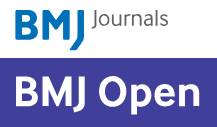Overestimation of hyperopia with autorefraction compared with retinoscopy under cycloplegia in school-age children
Authors
Affiliations
1Noor Research Center for Ophthalmic Epidemiology, Noor Eye Hospital, Tehran, Iran.
2Department of Medical Surgical Nursing, School of Nursing and Midwifery, Shahid Beheshti University of Medical Sciences, Tehran, Iran.
3Refractive Errors Research Center, Mashhad University of Medical Sciences, Mashhad, Iran.
4Department of Optometry, School of Paramedical Sciences, Mashhad University of Medical Sciences, Mashad, Iran.
5Ophthalmic Epidemiology Research Center, Shahroud University of Medical Sciences, Shahroud, Iran.
6Department of Epidemiology and Biostatistics, School of Public Health, Tehran University of Medical Sciences, Tehran, Iran.
Abstract
Aim: To compare sphere and cylinder refraction values using retinoscopy and autorefraction under cycloplegic conditions in children.
Methods: This cross-sectional study was carried out using multistage cluster sampling. The target population was children aged 6-12 years in Shahroud, a northern city in Iran. Examinations included measurements of visual acuity, subjective refraction and objective refraction. Objective refraction was measured with and without cycloplegia with a retinoscope and an autorefractometer.
Results: After applying the exclusion criteria, data from 5053 children were analysed. Spherical refraction results with autorefraction were significantly higher than results with retinoscopy (P<0.001). Refraction overestimation was significant in all age groups (P<0.0001). Comparison of differences in different spherical ametropia subgroups also showed a significant intermethod difference in all refractive states (P<0. 01). Overall, autorefraction tended to over plus hyperopics and under minus myopic cases compared with retinoscopy. The 95% limits of agreement for spherical values measured with the two techniques were -0.35 Diopter (D) to 0.50 D. The values of J0 and J45 vectors with autorefraction were significantly higher than those with retinoscopy (P<0.001). The 95% limits of agreement between the two methods for vectors J0 and J45 were -0.12 D to 0.15 D and -0.10 D to 0.11 D, respectively.
Conclusion: Since the observed differences in spherical refraction and the cylindrical components obtained through retinoscopy and autorefraction are statistically significant, but clinically insignificant, and the two methods have a strong correlation and agreement, it can be concluded that autorefraction can be a suitable substitute for retinoscopy in children under cycloplegic conditions.
Keywords: autorefraction; cycloplegic; retinoscopy; sphere.

